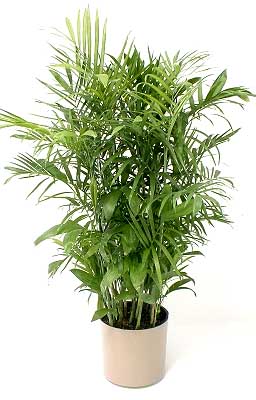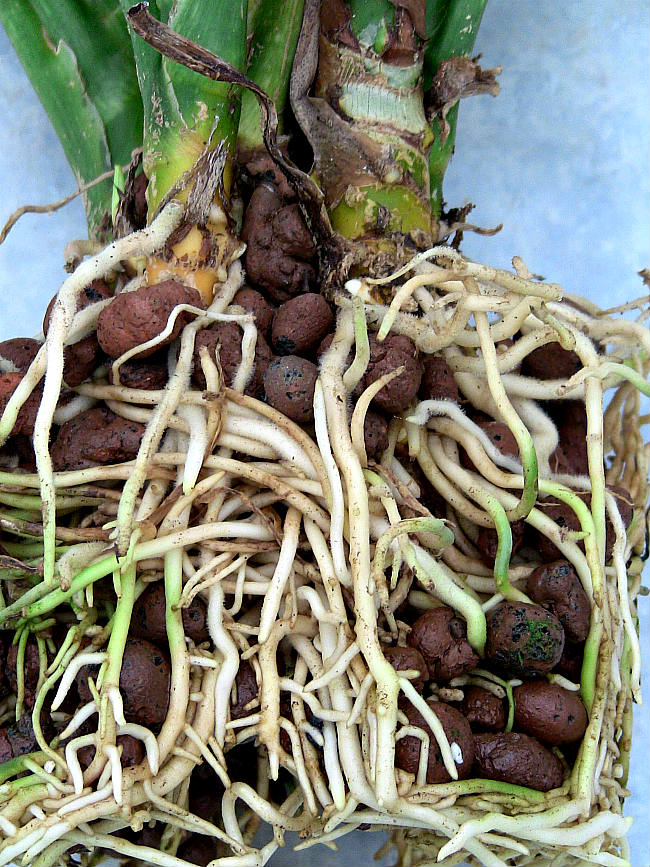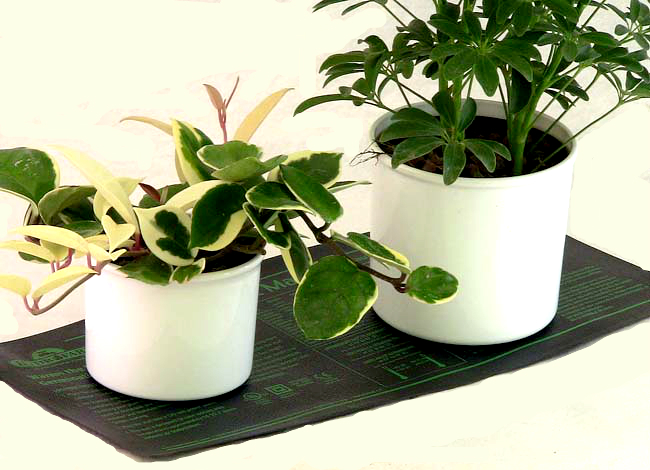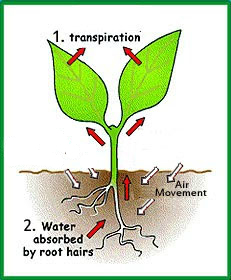Repotting Houseplants into Hydroponics . . .
Coaxing Stubborn Plants After Transplanting
|
Any plant can be grown hydroponically. Some plants have difficulties converting from soil to hydroponics however. |
 Bamboo Palms are an example of a plant that needs a little coaxing when transferring to hydroponics.
Bamboo Palms are an example of a plant that needs a little coaxing when transferring to hydroponics.Some plants struggle during the transition because they insist on growing new roots instead of adapting their existing roots.
This creates problems because because growing new roots takes time - and plants often go into stress waiting for new roots form.
Creating an ideal growing environment to encourage fast root growth is the key to success for these plants.
The ideal growing environment for root growth is:
1) warm temperatures at the root zone
2) increased the humidity at the leaves.
1. Warm Temperatures at the Roots
Houseplants need temperatures of at least 68 degrees at the root zone for roots to grow. If temperatures drop below 68 degrees root growth stops - that's why transplanting during the summer months is better than in winter.
When root growth stops bad things happen. Disease or decay set in quickly.
Warm temperatures at the root zone keeps roots active and growing. The best way to insure warm temperatures at the roots is growing on a Heat Mat. Heat Mats gently warm the roots without raising the air temperature at the leaves.
 Warm temperatures at the roots encourages healthy root growth.
Warm temperatures at the roots encourages healthy root growth. Heat Mat in action
Heat Mat in actionGrower Tip: Never place new transplants on radiators or near heat vents from the furnace to keep the root zone warm. Radiators get too hot and air from the furnace is extremely dry which effects other parts of the plant. Heat Mats are the only way to raise the temperature at the roots.
2. Increase Humidity at the Leaves
As plants grow, they release moisture into the air. This is called transpiration.
Transpiration accounts for 90% of the water used by plants! Only 10% is used for growing!
Slowing the rate of transpiration reduces the pressure on new roots to perform because less moisture is needed at the leaves.
 Transpiration at the leaves accounts for 90% of the water used by a plant!
Transpiration at the leaves accounts for 90% of the water used by a plant!The rate of transpiration, or how much moisture is released at the leaves, depends on the relative humidity around the plant.
Hot, dry air increases transpiration significantly while cool, damp air slows transpiration naturally.
Increasing humidity levels to at least 60% (or more) reduces the pressure on new roots to perform.
2 Ways to Increase Humidity
1) Lower room temperatures. Cool air holds moisture better than warm air. As long as the root zone stays warm, air temperature can go as low as 60 degrees.
2) Put your plant(s) on a Humidity Tray. Moisture in the air increases as water in the tray evaporates.

Misting plants to increase humidity doesn't do much because the effects of misting are short lived. Unless you mist your plant every 30 minutes - around the clock - misting won't help.
Grower Tip: Don't try to increase humidity by watering your plant more! Moisture in the air (humidity) is completely different from water in the pot.
Choosing Plants and Pots for Transplanting
Plant Care After Transplanting
